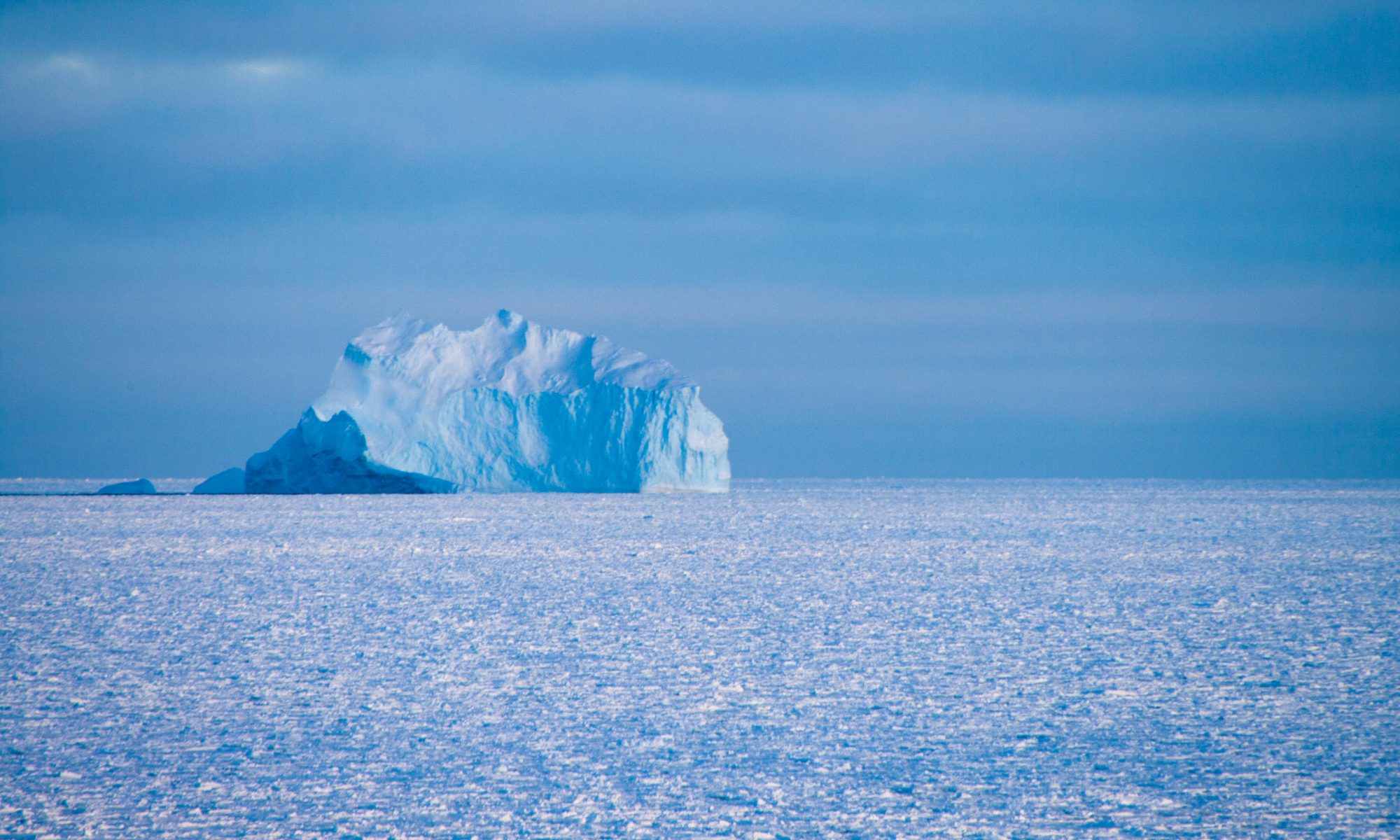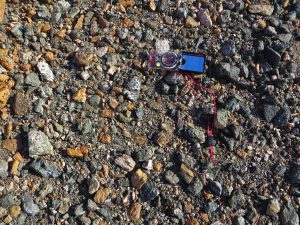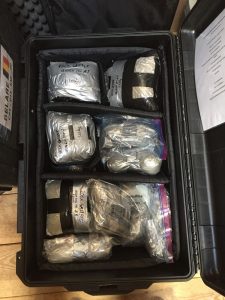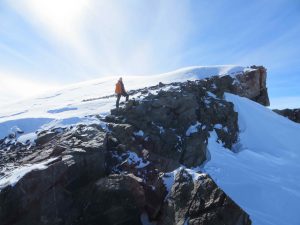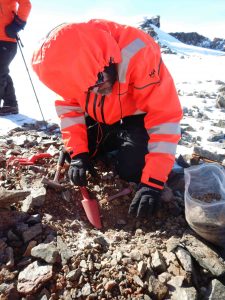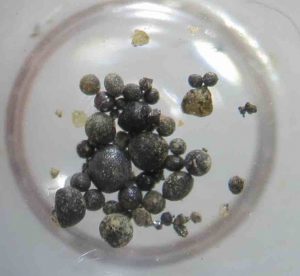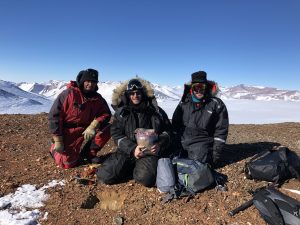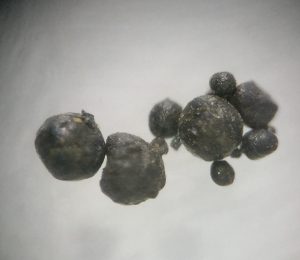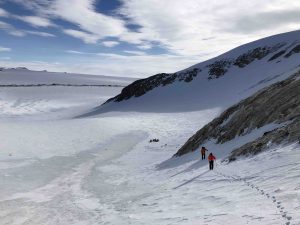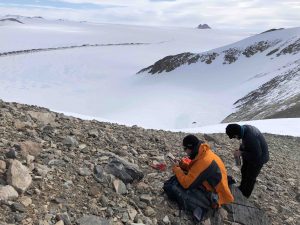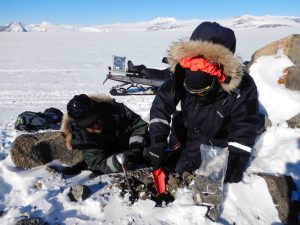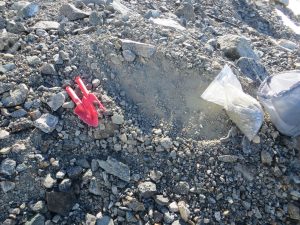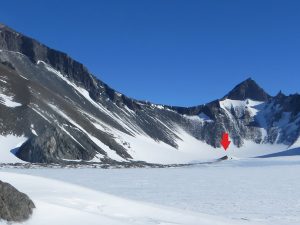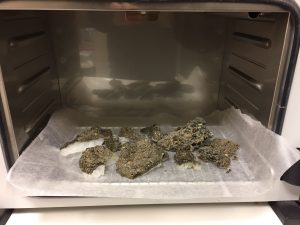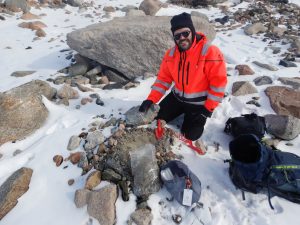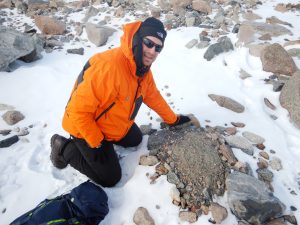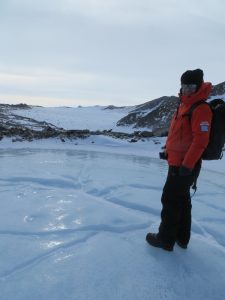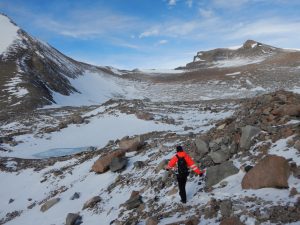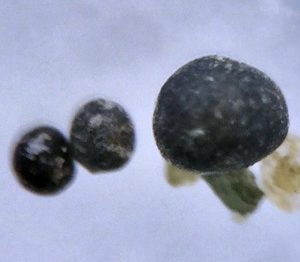For this last day on the field, we decided to look further west from the station, an area we haven’t sampled yet. Smalegga Mountain proved to be a suitable location, as well as a significant point of interest, as it was at the foot of this mountain that the 1959 Belgian Antarctic expedition left a sledge. Once at the top of the first crest from the ski-doo track, we noticed a glacially eroded surface covered with fine-grained material, which is an ideal sampling site for micrometeorites. After taking the sample back to the laboratory of the station, we quickly found our first cosmic spherule of the day. However, it also turned out to be our last micrometeorite in this sample. Once back in Brussels, we will have more time and better equipment to determine the quality of this sample.
Now we keep busy preparing our trip back to Belgium, packing and labelling all the samples we have collected on the field. A tedious task, but an important one nonetheless.
After 450 km on the skidoo and 105 kg of sampled sediment, our Antarctic adventure has come to an end. As they say in French: “ce n’est qu’un au revoir!”.
Steven and Matthias
